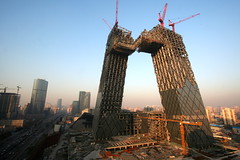Lianzhou Underground River – cave exploring
Wednesday, November 18th, 2009Last weekend, I took a trip to Lianzhou with Kai of CNReviews with the purpose to attend Chinese Blogger Conferene 2009. Kai wrote about our trip and the conference here and here.
Lianzhou is located in north board of Guangdong & Hunan province. It is about 400 km away from Guangzhou. A highway (it is not a freeway, for you have fee to pay.) has been built between Lianzhou and Guangzhou now which shorten the trip from 8+ hours to about 4 hours. In my memory, it is one of the most poverty area in Guangzhou. Reason is that it is surrounded by mountains and transportation has been very unconvinient for century. The newly built freeway is designed to change the poor economy situation.
The most interesting part of the conference is that we were gathering at the entrance of a big cave. The cave is in a park called Lianzhou Underground River. We have the opportuniy to explore the cave in a tour during the conference. Here is the photo tour:
If you have been to Gulin and been to one of those caves, i bet the experience is quite similar. The big impression on this cave is that it is newly developed, the route design and construction, or even the English translation of signs are very professional. I feel very safe in the cave. However, it is total different from my other cave adventure in Yangshuo.







